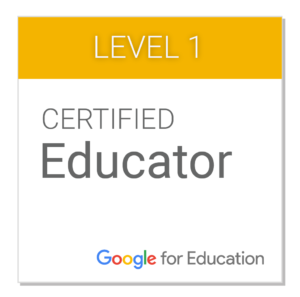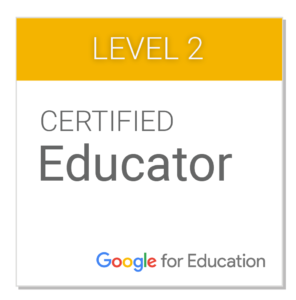What is something you learned on your own recently? After doing the readings, what elements of your own learning experience would you connect to the readings? Provide at least two points of connection to the readings.
For the past two weeks I have been intensely getting our school ready to take the state standardized test. This has required clear communication, well laid out documents that have all of the necessary information that each person will need, and countless spreadsheets that cross-references accommodations, opt out data, and homeroom placement. Creating spreadsheets is not something new to my work, but making complex ones that have multiple embedded formulas is. For the past two weeks I have watched a lot of YouTube videos and consulted with the people in my professional learning network at school for help troubleshooting formulas that weren’t working. Although it has been a tedious job, it has been interesting and motivating to see my new skills fruitfully put to use.
How do you interact with other professionals? How do you find inspiration to continue your own growth?
For this task that I outlined above I interacted with professionals through Internet searches and emails and phone calls to other people that I work with. The inspiration came from the fact that the task had to get done and without learning these new skills with spreadsheets that task was too large to complete by hand.
What is a specific idea you hope to take forward from the readings into your work with other adults?
From Aguilar (2016) the point that resonated with me the most about adult learners was that they come to the learning experience with history. One of the challenges that I find when developing a learning experience for adults versus school-aged students is that they all have a different about of knowledge and background that they bring to the learning experience they are having with me. It is critical to develop ways for a variety of entry points into the learning so that is it engaging for everyone there, as well as offer a variety of ways for people to deepen their own learning.




Google is my friend 🙂 I can totally relate to that task as I had to work around and utilize Microsoft Access to query multiple spreadsheets with a lot of information for assessment purposes and I had to connect with multiple colleagues and look through Internet resources to utilize a program that has probably been out of my skillset for at least ten years (at least in the capacity).
I like the point about providing a variety of entry points as well.
You mention state testing and standardized tests. What is your position on them? I realize that question is pretty broad… I suppose that I mean, I have heard two separate stories regarding standardized testing. First, it is a horrible way to gauge student progress. A single test to discern where a student falls on a national scale might not be the best for gauging student progress – or school progress for that matter. Secondly, I have heard that tests like this force schools to ‘teach to the test,’ where, instead of a normal and hopefully well-rounded curriculum, teachers are forced to cover material found in the test – which can make other lessons fall to the wayside. Also, who makes these tests? Education professionals, or government policy makers? The Secretary of Education, for example is a billionaire heiress to the Amway fortune, who holds a bachelors of arts degree…
Thoughts?
Hi Sarah, We have been feverishly getting ready for standardized tests at our school too. I am impressed that you have a good attitude about this work. You are so right…. it is critical to develop a variety of entry points. Adult learners not only come with different backgrounds, they have varying interests and abilities. My young students are this way for some topics, but when I asked my math group what they knew about area and perimeter this week, not one student raised their hand with an idea! Adult students can be a very different group than my young learners.
Your description of a “variety of entry points” for adult learners makes a lot of sense to me. Now, if I could just figure out how to identify those entry points! My best way of doing this with my colleagues who are nervous about technology integration is to try to meet with them one-on-one to chat and figure out how to choose steps that they’re comfortable with (i.e., baby steps, leaps, dive right in, etc.). How do you figure out the best entry points for adult learners?